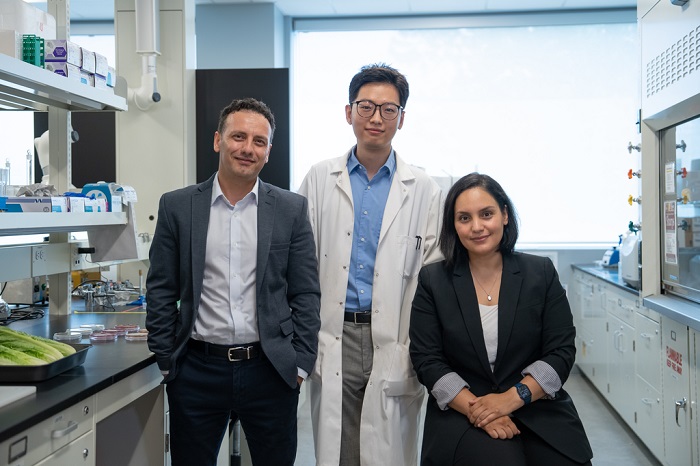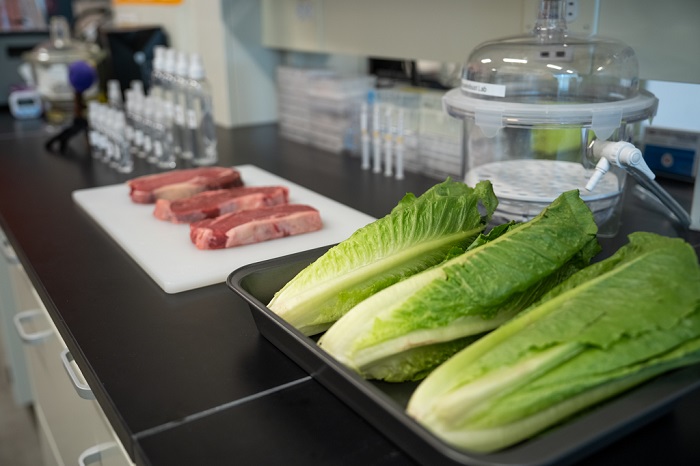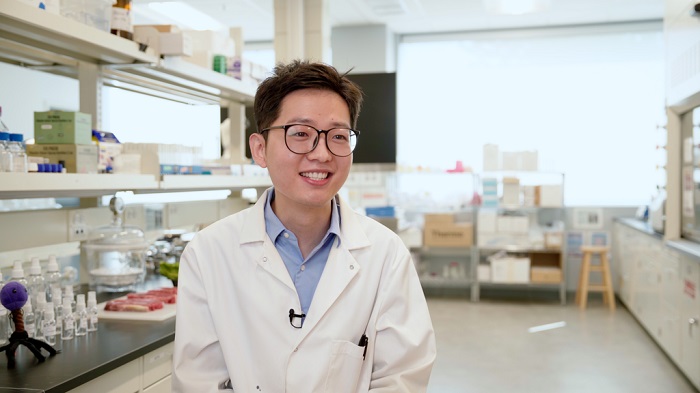
LATEST STORIES:


Researchers at McMaster University have created a powerful new way to fight bacterial contamination in our food.
A team of engineers led by professors Zeinab Hosseinidoust and Tohid Didar, and including graduate student Lei Tian, developed a way to coax naturally occurring, bacteria-eating viruses called bacteriophages (phages) to link together into microscopic beads.
Using nothing but those microbeads, the team has developed a spray which can be applied to things like meat and lettuce. Each bead is about 20 microns, (one 50th of a millimetre) in diameter and is loaded with millions of phages.

When phages – which occur naturally in the body and in the environment – contact target bacteria, they multiply, explosively increasing their antimicrobial power as they work.
In an article posted in the scientific journal “Nature Communications”, the researchers say their sprayable disinfectant is food safe, and highly effective.
The beads can be safely sprayed onto food and packaging to rid them of harmful pathogens such as E. coli which can be a source of disease outbreaks.
If the beads sense bacteria like E. coli, salmonella, or listeria, they attack it without harming the good bacteria that gives foods their taste, smell, and texture.

“When we spray it on food, we basically gather billions of mini-soldiers to protect our food from bacterial contamination,” Tian said.
It could be used for food processing and packaging, or even as a treatment for irrigation water.
The new phage spray has promising potential for commercial application, the researchers say, especially since phages have already earned approval from the US Food and Drug Administration for use in food.
The group plans to test the new material’s promising applications in medicine next, where it might be used for disinfecting wounds, for example.
With antimicrobial resistance sapping the power of existing antibiotics, there is intense new interest in phage research.
Medical applications will take more time to be proven safe and effective, but a product made for disinfection in food processing could make it to market much more quickly.